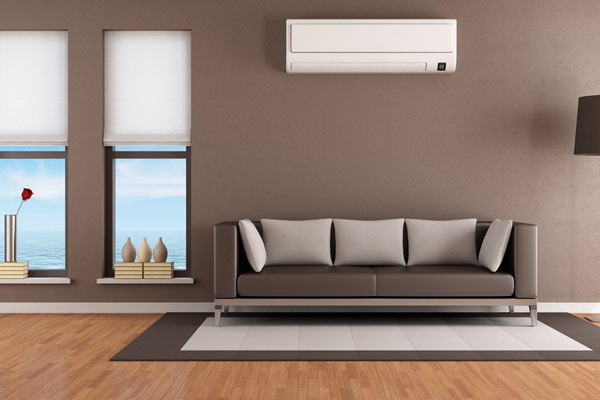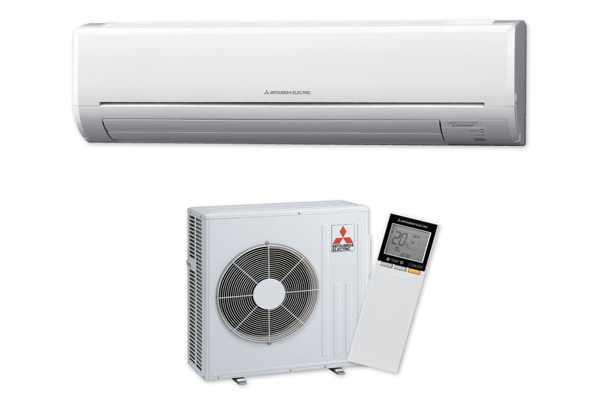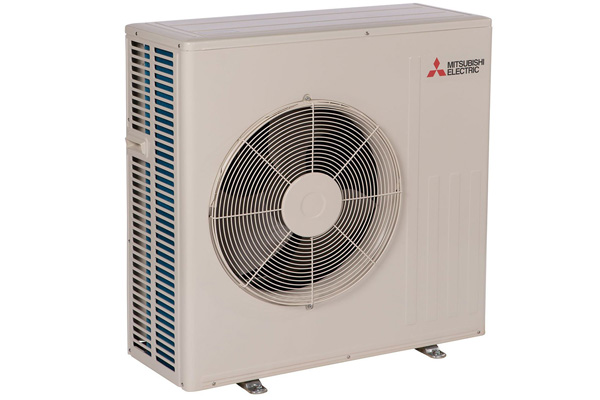Best Ways To Create A Zoned Mini-Split System

Ductless mini-split systems allow you to control indoor temperatures in different rooms or zones. It is composed of two major components: the indoor air handler and the outdoor compressor or condenser. These components connect through a conduit that goes through a small, three-inch-wide hole in the wall, creating a zoned mini-split system.
A mini-split system is considered the best heating and cooling solution for whole homes and new constructions. They are also recommended for rooms and areas where the addition of a ductwork system is not possible. Many homeowners install ductless indoor air handlers in rooms that are frequently in use. This way, they can rely on their central HVAC system less. They do this as a way to cut down on heating and cooling costs. A mini-split system is safe and efficient. Also, it is also cost-effective and flexible. This is why it is increasingly becoming a popular choice among many households.
How To Create A Multi-Zone Setup Using A Ductless HVAC System
Contents
- How To Create A Multi-Zone Setup Using A Ductless HVAC System
Mini-splits have plenty of features. One of their most appealing features is that they offer zoned comfort. You can create individual temperature control for up to 8 zones with one single outdoor unit. Regardless, if you are unfamiliar with the zoning capabilities of ductless heat pumps, do not worry. In this article, we will help you understand the three steps you need to create an effective zoning system in your home using a ductless mini-split system.
Step One: Know The Required Ductless Size
The first step you need to be aware of before purchasing an HVAC system is to determine the size or capacity of the mini-split system you need for your home. Size refers to the ability of the unit to move heat within an enclosed space. Sizing is measured in BTUs or British Thermal Units. BTU refers to how much heat is required to increase the temperature of 1 lb. of water by 1° Fahrenheit.

Sizing For Mini-Splits
You must acquire the correct mini-split system size. This will ensure that it generates enough power to keep your home comfortable. Remember that a higher BTU rating means that the mini-split system can generate more heating or cooling power.
Let’s say you have a mini-split system that is rated at 6,000 BTUs. You can expect it to generate enough heat for a 150-250 sq. ft. of space. A unit with a higher BTU rating, on the other hand, can heat up a bigger room. If your mini-split is rated at 24,000 BTUs, it is effective for heating a space measuring between 1,400 to 1,500 sq. ft. The same is true for the cooling capacity of all mini-splits.
Problems With An Incorrectly Sized Ductless HVAC System
If your mini-split system is not sized properly, it is very likely that you will encounter problems with the system right away. If the mini-split is too small for the home, it will never perform well enough to keep your comfort level. The system will operate continuously but will fail at keeping the room warm or cool enough. A mini-split system with insufficient sizing will result in warm or cool spots around your home.
So if undersizing does not work, will oversizing do? The answer is no. If the mini-split system is larger than necessary, it will begin to short cycle, wherein the system turns on and turns off frequently. This will overwork the system and cause your mini-split to consume more energy than is necessary. An oversized system is also more likely to fail prematurely.
To avoid problems with undersizing and oversizing, make sure that you call an HVAC contractor to perform a load calculation for you. This way, you can rest assured that you will invest in a ductless system that matches your home. The wrong size will significantly reduce the efficiency of the system and affect overall home comfort. It will also lead to premature failure and an increase in service costs. If you want to ensure that your HVAC system is the right size, talk to your local HVAC technician and ask for advice.
Nominal Vs. Actual
All HVAC condensers undergo a performance test during the manufacturing process to determine their correct size. The test is conducted in ideal conditions within the factory. The results from this test are referred to as the nominal capacity rating. This figure is an indication of the size and capabilities of each condenser.
Keep in mind that the conditions in the testing facility are not the same as those in the real world where HVAC systems will be put to use. This is where the actual capacity rating comes in. There are various factors that affect how well a mini-split system will ultimately perform. These factors (outdoor temperature, humidity, line-set length, and installation variations, to name a few) all contribute to the actual experience that the system will offer.
Some mini-split systems work harder under extreme heat but will return to normal operation settings under normal or average temperatures. If your home is between sizes (neither large or small), it is recommended that you choose a higher size to ensure that your heating and cooling needs are met.
Step Two: Choose A Ductless Condenser
Once you have identified the correct condenser size that fits your home, you need to determine the type of condenser that is best suited for your needs. Let’s say you want to create several zones in your home. If that is the case, you will need to look at two condenser types: the branch box and the multi-port.
Branch Box
The branch box condenser is a system wherein the condenser is linked to the indoor air handler. It is often found in high-capacity multi-zone outdoor units. Such units are capable of handling up to eight zones. A branch box connects the condenser using only a single connection. Regardless, it provides sufficient amounts of refrigerant to supply multiple indoor air handlers. If a branch box is connected to another branch box, it can handle as many as nine zones using just one condenser.
Most branch boxes are specific to a manufacturer. As such, a condenser can only support specific branch box combinations. If you choose to use a branch box, ask for professional advice to ensure that you choose the correct type.
Multi-Port
The multi-port type is an all-in-one condenser with built-in ports for the refrigerant. The ports offer multiple connections between the indoor units and the outdoor unit. This feature makes the multi-port quite easy to use. With a multi-port system, you can heat/cool several independently-controlled zones without needing to add pipe connections.
A multi-port condenser comes with a lower price tag. However, it also has reduced flexibility, fewer available line-set lengths, and limited capacity. It also requires having numerous line sets installed outdoors, which can be unappealing for your home.
Branch Box Vs. Multi-Port
Both the branch box and multi-port condenser come with pros and cons. A multi-port, for example, is easier to install because it has fewer parts. With a multi-port, you can create up to five zones. However, it does have a limited BTU capacity. It will also require longer line-set runs.
A branch box offers a higher BTU capacity and has better flexibility. With a branch box type, you can have as many as nine zones for your home. It is, however, a complex system that has more parts and requires a more laborious installation process.
If choosing between a branch box and a multi-port seems confusing, check out the latest models. This will help you have a better look at what both types can offer.

Step Three: Choose The Ductless Indoor Air Handler
The last step you need to do to create your own zoned ductless mini-split system is to choose the indoor air handler. Different types provide a number of benefits for your specific needs. Here are some of them:
Wall-Mounted Ductless Systems
The most commonly installed indoor air handler is the wall-mounted type. It is the least expensive, generally the most efficient, and the easiest type to install. Because it is quite popular, it comes in a wide range of types, efficiency rating, and sizes.
Wall-mounted systems are installed on a wall. These require only a 3-inch wide hole through the wall for connecting the indoor unit to the outdoor unit. For best results, make sure that the wall is wide and that there are no high windows in the room where the unit is installed.
Floor-Mounted Indoor Air Handlers
Floor-mounted indoor air handlers are installed on a vertical wall near the floor, at least six inches from the floor surface. This is the best option for your home if you do not have enough wall space or if you have very high windows. It is also the perfect solution for areas or rooms where ceilings are slanted or too low.
Ceiling Cassette Ductless Air Handlers
Ceiling cassettes are air handlers that are installed in the ceiling. These are excellent options for homes with T-bar or drop ceilings. A ceiling cassette can be installed on joist ceilings and drywalls as long as there is sufficient space between the joists. With ceiling cassettes, you do not see any of the components of the system except for the grilles. As such, you enjoy a discrete system of heating and cooling.
Concealed Duct Indoor Air Handlers
Concealed ducts are installed outside the zone, with only the grilles visible. They offer flexibility and a great aesthetic solution if you lack space in the room or if you do not want HVAC components to be seen. A concealed duct system combines the benefits of a ductless mini-split and the central forced-air system. It can be mounted in a closet, crawlspace, or attic. It uses the ductwork system to distribute conditioned air where needed.
Concealed ducts are perfect for your home if you do not want visible parts. It is also a great choice for ceilings that cannot use ceiling cassettes. However, concealed ducts have a lower efficiency rating.
Ceiling-Suspended Indoor Unit
An HVAC contractor mounts a ceiling-suspended unit directly on the ceiling. They can be suspended with threaded rods or installed against a vertical wall. Suspended units are excellent if you have appliances installed on the ceiling as well. Since appliances block airflow, having the threaded rods will help ensure that the flow of conditioned air is unimpeded. Just make sure that the unit has a minimum distance of eight feet from the surface of the floor and an HVAC contractor does not install in the center, where it does not have enough support.
Check Out One Of Our Ductless Installation Projects
Ductless Panels Add Heat And AC In An Addition To A Catasauqua PA Home
Conclusion
With these three basic steps, you can now begin to create your very own zoned mini-split system at home. If you want to be 100% sure about what to do, don’t hesitate to call a qualified HVAC professional to help you. A trusted HVAC expert can help you identify the best solutions that will match your heating and cooling needs for optimum comfort and safety.
Call R.F. Ohl To Learn More About Ductless Heating & Cooling Systems

If you want to discover what a ductless HVAC system can do for you, call R.F. Ohl. Our NATE-certified technicians will help you determine the type of HVAC system that works best for your needs.
R.F. Ohl is one of the region’s leading full-service HVAC companies. We offer a wide range of HVAC services, from installations and tune-ups to repairs and consultations. We can help you find different approaches and solutions to ensure that our services meet your requirements and budget. Call us today for a free, in-home estimate.
Click here to contact us today or give us a call at (610) 377-1098 if you have any questions.